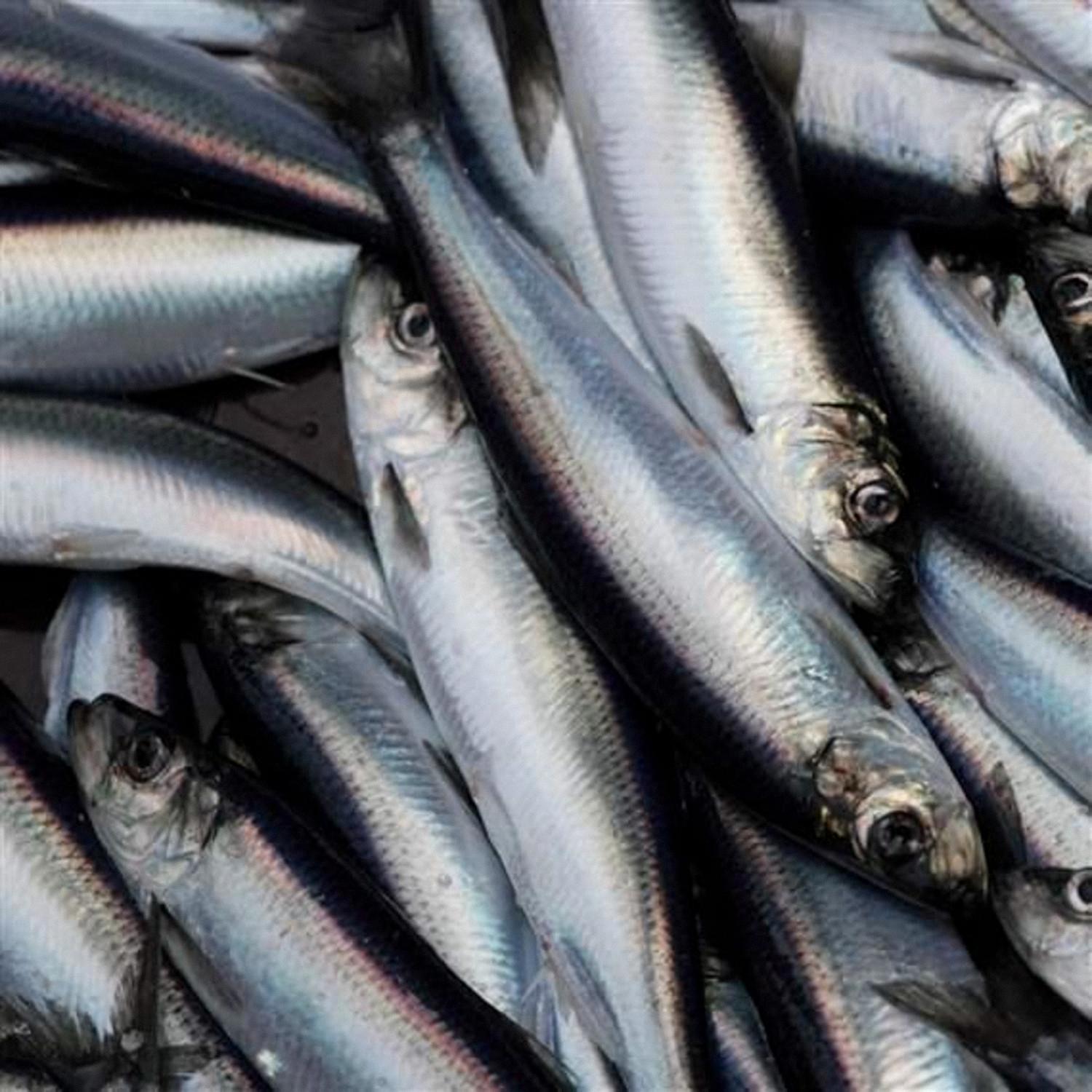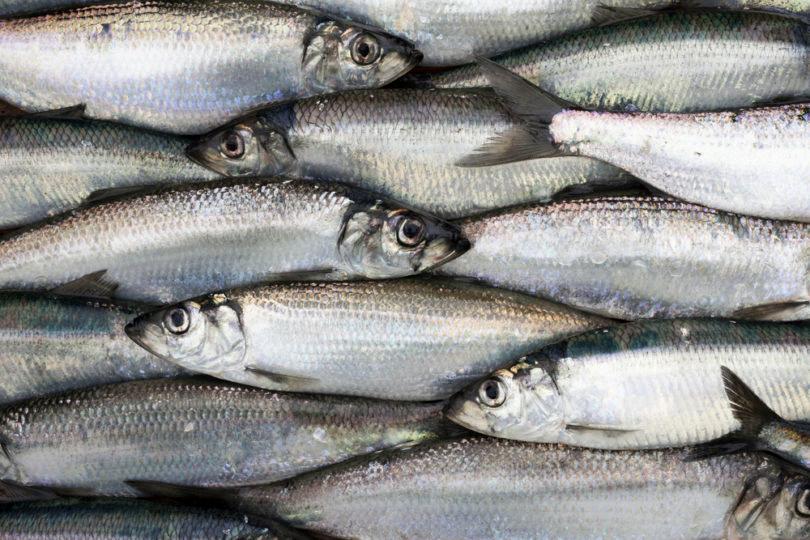The Atlantic herring (Clupea harengus) is a species of herring found in the waters off North America and Europe. It is a small, oily fish that is an important food source for humans and animals alike. The Atlantic herring is also a popular baitfish, used by fishermen to attract larger fish.
Herring are schooling fish, meaning they travel in large groups. They are an important part of the marine ecosystem and play a role in the global carbon cycle. Herring are filter feeders, whch means they strain tiny plants and animals from the water to eat. This helps to keep the ocean clean.

Atlantic herring can be found in the Gulf of Maine, Bay of Fundy, and Scotian Shelf regions of Canada. In the United States, they are found off the coast of New England, in the Mid-Atlantic region, and in the Southeast. Herring populations have declined in recent years due to overfishing and environmental degradation.
Can You Eat Atlantic Herring?
Yes, Atlantic herring can be eaten. Every year, over two million tons of Atlantic herring are caught and eaten worldwide, making it the third most fished species in the world by volume. Herring is a popular food fish that is low in fat and high in protein. It can be prepared in a variety of ways, including pickled, smoked, or grilled.

Where Are Atlantic Herring Found?
Atlantic herring are a coastal pelagic fish that have been found schooling in numbers upwards of sveral billion fish. They are found on both sides of the Atlantic Ocean; in the Northwest Atlantic they are found on the continental shelf and coastal waters from Labrador to Cape Hatteras, North Carolina. In the Northeast Atlantic, they are found on the continental shelf and coastal waters from Spitsbergen, Norway to Morocco.
Why Are Atlantic Herring Important To Humans?
The Atlantic herring fishery is extremely valuable to the economy in the Northeast United States. Herring are sold frozen, salted, or canned as sardines in both U.S. and international markets and provie affordable bait to fishermen targeting lobster, blue crab, and tuna.
Herring are an important prey species for a variety of top predators including seabirds, whales, dolphins, porpoises, seals, and fish such as tuna and cod. As such, they play a key role in maintaining the health of marine ecosystems.
Humans have been exploiting herring stocks for centuries and they continue to be an important food source for people arond the world.
Is Herring A Predatory Fish?
Yes, herring are predatory fish. They consume copepods, arrow worms, pelagic amphipods, mysids, and krill in the pelagic zone. Conversely, they are a central prey item or forage fish for higher trophic levels.
What Do Herring Taste Like?
Herring is a type of fish that has a distinct flavor similar to a sardine. When eaten fresh, herring has a unique flavor that is both hearty and fulfilling. The rich fatty components of the fish give it a distinct body that coats the palate. Herring is an oily fish, so it flakes off in moist chunks. This makes it a perfect choice for those who are looking for a hearty meal.

Is Herring A Healthy Fish?
Yes, herring is a healthy fish. A single three-ounce serving of herring contains a whopping 20 grams of protein. In addition to its high protein content, herring contains many other key nutrients, such as omega-3 fatty acids.
Are Herring And Sardines The Same?
Yes, herring and sardines are the same. “Sardine” simply means “small fish.” The fish in question were named after Sardinia, the secod largest island in the Mediterranean, because they used to be plentiful in this region. When they’re young and small, they’re called sardines. When they get older and bigger, they’re called herring.
What Is The Season For Herring?
October marks the start of the herring fishing season in the southern North Sea. This is when the herring begin teir migration down through the eastern Channel, and continue to do so until the quota for the season has been reached in February or March.
How Do You Catch The Atlantic Herring?
Herring are caught in Atlantic Canada using a variety of fishing gear types, the most common being mid-water trawls and purse seines.
Mid-water trawls work by towing a large net throgh the water column, which herds schooling fish towards the narrow back end of the net where they become trapped.
Purse seines are also used to target herring schools, and work by encircling the school with a large net and then drawing the bottom of the net closed like a drawstring purse, trapping the fish inside.
Other gear types used to catch herring include gillnets, weirs, and handlines. Gillnets are stationary nets that rely on the fish swimming into them to become entangled, while weirs are small dams placed across streams that funnel fish into a small area where they can be caught by hand.

What Country Eats The Most Herring?
Germany, Poland and the United Kingdom were the top three consumers of canned herring in 2018, with a combined 55% share of total consumption. These countries were followed by Italy, Spain, the Netherlands and Hungary, which together accounted for a further 31%.
What Are The Health Benefits Of Herring?
Herring is a type of fish that is high in omega-3 fatty acids, whch are beneficial for maintaining heart health and preventing cognitive decline. The fatty acids in herring also help to reduce inflammation, making it an effective treatment for conditions like Crohn’s disease and arthritis.
What Is Herring Used For?
Herring is a small, oily fish that is found in the Atlantic and Pacific Oceans. It is an important food fish, as well as bing used for bait and other purposes.
Herring are a keystone species in the marine ecosystem, meaning that they have a large impact on their environment and the other animals that live there. They are an important food source for many predators, including seabirds, whales, dolphins, and sharks.
Herring are also commercially fished for their roe, which is used in caviar, as well as for their flesh, which is sold fresh, smoked, or canned.
Is Herring The Same As Mackerel?
Herring and mackerel are both types of fish, but they are not the same. Herring are smaller and swim in schools, while mackerel are larger and more predatory. Mackerel also have many adaptations for fast swimming.
How Big Can Herrings Get?
Herring are a type of fish that can range in size from 8 to 15 inches, with adults typically falling somewhere in the 20 to 38 centimetre range. One of the most abundant species of fish in the world, herring primarily feed on small organisms such as copepods, pteropods, and other planktonic crustaceans, as well as fish larvae.
Why Is Herring Pickled?
Pickling herring is a way to store and transport the fish, which was especially necessary during meatless periods like Lent. The herrings wuld be prepared, then packed in barrels for storage or transportation.
Is Herring Better Than Sardines?
Herring and sardines are both small, oily fish that are rich in nutrients. Both types of fish are good sources of vitamin D and zinc, but sardines are also rich in calcium. The biggest difference between the two fish is the way they are processed. Herring is typically smoked or pickled, while sardines are usually canned.
Is Herring A Superfood?
Yes, herring is a Superfood! It is the best source of vitamin B12 and vitamin D. It also has the tird highest amount of omega-3s. This combination of nutrients makes herring a smart addition to your diet to improve your heart, memory, bone strength and mood.

Is Herring Fish High In Mercury?
Herring is a type of fish that is high in mercury. This is because herring contains a lot of omega-3 fatty acids, which are essential to human health. However, herring also contains less mercury than other omega-3-rich fish, such as tuna, king mackerel, swordfish and halibut.
Can I Eat Herring Everyday?
Herring is an excellent source of nutrients and provides numerous health benefits. However, like with any food, it is important to eat in moderation. consuming herring everyday may lead to adverse effects such as gastrointestinal distress.
Is Herring The Same As Anchovies?
No, herring and anchovies are not the same. Herring are larger in size with light-colored flesh, while anchovies are smaller with dark-colored flesh. Both fish have a salty flavor, but anchovies are saltier than herring. Nutrients in herring and anchovies are also different. Herring is a good source of vitamin D, while anchovies provide more vitamin B12.
Why Are Herring Called Kippers?
The herring is a type of fish that is often smoked and eaten as a food. The term “kipper” is derived from the Old English word kippen, wich means “to pull, snatch.” The herring is usually smoked in order to preserve it, and the smoking process gives it a distinctive flavor.
What Fish Is Similar To Herring?
The herring is a member of the Clupeidae family, which also includes the anchovy and the sardine. All three fish are similar in appearance, with long, slim bodies and forked tails. However, the herring is the largest of the three, with a typical length of around 20 inches. The anchovy is the smallest, at around 6 inches in length.
Can You Eat Fresh Herring?
Yes, you can eat fresh herring. Here’s everyting you need to know about this small, oily fish.
Herring are a type of fish that are found in the waters of the North Atlantic and North Pacific oceans. They are small, silver-colored fish with a forked tail. Herring are an important food source for humans and animals alike.
Herring are a good source of protein and omega-3 fatty acids. They are also low in mercury. For these reasons, herring are considered to be a healthy food choice.
You can eat herring fresh, smoked, pickled, or canned. When buying fresh herring, look for bright eyes, firm flesh, and a pleasant smell. Avoid any fish that looks dull or has a strong odor.
To prepare fresh herring, you can fry, bake, broil, or grill it. Herring is often eaten with potatoes and othr vegetables.
What Kind Of Meat Is Herring?
Herring is a fish that belongs to the family Clupeidae. There are many diferent species of herring, but they are all small, oily fish that are found in the oceans around the world. Herring are an important food for humans, as they are a source of protein and omega-3 fatty acids.
What Do Atlantic Herring Eat?
Atlantic herring are a type of fish that can be found in both the Atlantic Ocean and the Mediterranean Sea. They usually congregate in large schools and can grow up to 45 centimetres (18 inches) in length and weigh up to 1.1 kilograms (2.4 pounds).
Atlantic herring mostly feed on copepods, which are tiny crustaceans that live in the water. They also eat krill, which are small shrimp-like creatures, and small fish. Their natural predators include seals, whales, cod and other larger fish.
Is Herring A Saltwater Fish?
Herring is a type of fish that can live in both salt and fresh water. Most herring species are ocean-dwelling or anadromous, living in salt water as adults, but returning to fresh water to spawn, and spending the early part of their lives in fresh water. Other Herring family members are strictly freshwater fish.
Where Are Herring Found In The UK?
Herring are found all along the coast of the UK, from the southern shores of England to the northern coastline of Scotland. They are particularly abundant in Scottish waters, where around 90% of the UK’s herring stocks are located. Herring are an important prey species for many predators, including cod, saithe, whiting, mackerel, seabirds and marine mammals.
Do The Dutch Eat Raw Herring?
Yes, the Dutch love to eat raw herring! This delicacy is called Hollandse Nieuwe or ‘New Dutch herring’. It is usually eaten on a bun or as a snack with some chopped onions and pickles. Herring season starts annually in June with the famous Vlaggetjesdag or ‘flag day’.
How Do Europeans Eat Herring?
Herring is a popular food fish in Europe and is eaten in many different ways. In Scandinavia, herring is often pickled or smoked and served with potatoes, sour cream, and dill. In Germany, herring is commonly served in a Rollmops, which is a pickled herring rolled into a cylindrical shape. In the Netherlands, herring is usually eaten raw, either whole or sliced, and topped with chopped onions or pickles. Another more filling way to eat herring is sandwiched in a bread roll: a so-called broodje haring.
What Country Is Known For Herring?
The Netherlands is kown for herring. This fish has been a staple dish of the Dutch people since the Middle Ages, when the Dutch were a seafaring nation and much of their economy depended on fish trade. Herring is usually pickled or smoked before being eaten, and it is often served with onions, bread, and butter.
Is Herring Good For Your Liver?
Herring is a good source of omega-3 fatty acids, wich are beneficial for the liver. Studies suggest that people with cirrhosis have lower levels of these fatty acids, and that increasing omega-3 intake may help improve liver function in the long term.
Is Herring Good For High Blood Pressure?
Yes, herring is a good choice for people with high blood pressure. The omega-3 fatty acids in fish oil have been shown to lower blood pressure and cholesterol, and to protect aganst heart disease and stroke.
How Do You Prepare Herring To Eat?
To prepare herring to eat, rinse the fish thoroughly from inside and outside, pat dry, season with salt and pepper, and coat with flour. Tap off the excess flour from the herring. Heat oil and butter in a large frying pan and fry the herring in it while turning for about 8 minutes until crispy.
Is Herring Very Fishy?
While herring are smaller than some of the larger commercial fish we eat, fresh herring meat is soft, according to Seafood Source. Small herring have a delicate flavor, while larger fish have a fuller, oilier flavor. The overall taste of the fish, however, lies in how it is cooked. Herring can be smoked, pickled or otherwise preserved, and these methods will affect the taste of the fish. In general, herring is a fairly mild-tasting fish that is not very fishy.
Is Eating Herring Ethical?
The short answer is no, eating herring is not ethical. The seafood industry is environmentally destructive due to its direct impact on decreasing marine populations, polluting waters and habitat destruction. Herring are a keystone species in many ecosystems, and thir decline can lead to the collapse of these systems. Therefore, consuming herring is not only unethical, but also irresponsible.
Which Is Better Herring Or Mackerel?
Herring is a small, oily fish that is found in the Atlantic and Pacific oceans. It is a popular food fish, and is also used as bait. Herring are very nutritious, and are a good source of protein, vitamins, and minerals. They are also a good source of omega-3 fatty acids, wich are beneficial for heart health.
Mackerel is a medium-sized, oily fish that is found in the Atlantic, Pacific, and Indian oceans. It is a popular food fish, and is also used as bait. Mackerel are very nutritious, and are a good source of protein, vitamins, and minerals. They are also a good source of omega-3 fatty acids, which are beneficial for heart health.
So, whch is better – herring or mackerel? Both fish are very nutritious and offer many health benefits. However, herring has slightly more protein than mackerel, and also contains more omega-3 fatty acids. Therefore, herring may be slightly better for you than mackerel.
What Is Another Name For Herring?
The herring is a type of fish that is found in salt water. It is a small fish, and is often used as bait. Herring can also be eaten as food, and is often smoked or pickled.
What Is The Lifespan Of A Herring?
Herring are a type of fish that spawn eery year after reaching sexual maturity at 3 or 4 years of age. The average lifespan for these fish is 8 years in Southeast Alaska and up to 16 years in the Bering Sea.
What Do Herrings Travel In?
Herring are pelagic fish that travel in great shoals for spawning in certain coastal localities. After they spawn, the shoals disperse and the spent fish move out to deeper water. They then reassemble offshore as feeding shoals.
Do Herring Have Teeth?
The Atlantic herring is distinguished from other species of herring by the presence of tiny teeth arranged in an oval pattern on the roof of its mouth. These teeth are used to grind food and are an important part of the herring’s digestive process.
Is Pickled Herring Healthy To Eat?
Yes, pickled herring is healthy to eat. It contains many beneficial nutrients, especally heart-healthy omega-3 fatty acids.
Can I Eat Pickled Herring Everyday?
Yes, you can eat pickled herring every day if you want to increase your intake of vitamin B-12. This fish is high in vitamin B-12, with 71 percent of the daily recommended intake. Vitamin B-12 is important for nerve health. Pickled herring is also a good source of vitamin A and niacin.
Does Pickled Herring Have Parasites?
Yes, pickled herring can have parasites. If the fish is not properly cooked, the parasites can remain alive and cuse an infection.
Facts: The Herring
Conclusion
Herring are forage fish, mostly belonging to the family Clupeidae. Atlantic herring are found in the temperate waters of the North Atlantic Ocean, including the Baltic and Mediterranean seas, as well as off the west coast of Africa. They are also found in large numbers in the Gulf of Maine and Bay of Fundy. Herring can grow to a length of 45 cm (18 in) and a weight of 1.1 kg (2.4 lb). They eat plankton and small crustaceans.












